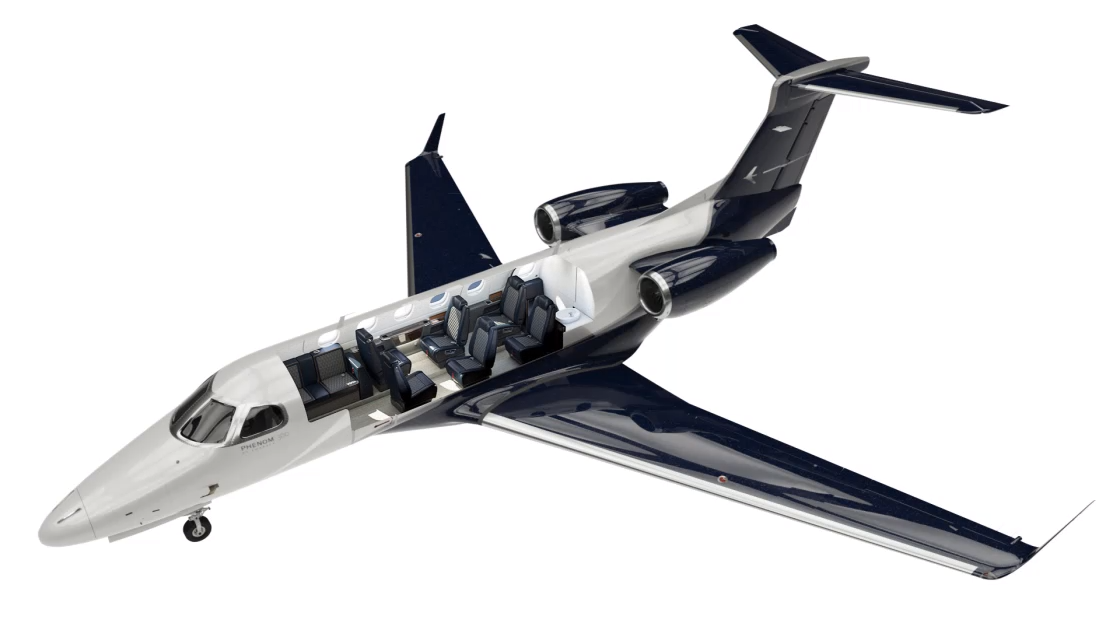What is Sustainable Aviation Fuel and how can it change the future of aviation?
Introduction
Sustainable aviation fuel (SAF) is a promising solution for reducing greenhouse gas emissions in the aviation industry. As global concerns about climate change continue to grow, finding sustainable alternatives to traditional jet fuel is becoming increasingly important. SAF, also known as biojet fuel, offers a renewable and environmentally friendly option for powering aircraft. This article will explore the concept of SAF, its production process, potential benefits, and challenges associated with its widespread adoption.
SAF is derived from various feedstock sources such as biomass, waste oils, and algae. These feedstocks are processed through a series of refining techniques to produce a fuel that can be used as a drop-in replacement for conventional jet fuel. The production process can be complex and requires advanced technology, but ongoing research and development efforts are continually improving its efficiency. Through the use of sustainable feedstocks, SAF helps to reduce the industry’s reliance on fossil fuels and decrease carbon dioxide emissions.
The benefits of SAF are numerous. Firstly, it has the potential to significantly reduce the carbon footprint of the aviation sector. When burned, SAF emits fewer greenhouse gases, including carbon dioxide, compared to traditional jet fuel. This reduction in emissions can help mitigate climate change and address the industry’s contribution to global warming. Secondly, SAF has the ability to enhance air quality due to reduced emissions of noxious gases such as sulfur oxides and nitrogen oxides. Cleaner air quality near airports and in surrounding communities can lead to improved public health and wellbeing.
Furthermore, SAF could also contribute to energy security and independence. By diversifying fuel sources and reducing dependence on fossil fuels, the aviation industry can become less vulnerable to fluctuations in oil prices and supply disruptions. Additionally, SAF presents economic opportunities such as job creation and increased investment in research and development. As demand for SAF rises, new industries and markets could emerge, providing economic benefits for both developed and developing countries.
However, despite its many potential advantages, the widespread adoption of SAF faces several challenges. Firstly, there is a limited availability of sustainable feedstocks for SAF production. Scaling up production to meet the global demand for aviation fuel remains a significant hurdle. Additionally, the high production costs associated with SAF may deter some airlines from transitioning to this technology. To address these challenges, governments and industries need to invest in research and infrastructure development to make SAF more commercially viable.
Moreover, the regulatory framework surrounding SAF needs to be established. Policies and standards should be put in place to incentivize the use of SAF and encourage its commercialization. Collaboration between governments, industry stakeholders, and research institutions is crucial in promoting investment, technology development, and market creation for SAF. Furthermore, public education and awareness campaigns are essential to promote the benefits of SAF and garner support for its integration into the aviation industry.
Therefore, sustainable aviation fuel offers a promising solution to mitigate the environmental impact of the aviation sector. With its potential to reduce greenhouse gas emissions, improve air quality, and enhance energy security, SAF presents a viable alternative to traditional jet fuel. Although challenges exist, continued research, innovation, and regulatory support will be essential in promoting the widespread adoption of SAF. As the aviation industry moves towards a more sustainable future, the development and utilization of SAF will undoubtedly play a critical role.
Overview of Aviation Emissions and the Need for Sustainable Fuel
Aviation plays a vital role in connecting people and goods across the globe, enabling travel and trade on an unprecedented scale. However, as the aviation industry continues to soar to new heights, it faces a major challenge in the form of greenhouse gas emissions. These emissions, primarily carbon dioxide (CO2), contribute to climate change and pose a threat to the sustainability of our planet. To mitigate these detrimental effects, there is an urgent need for sustainable aviation fuel (SAF), an alternative to conventional jet fuels that can substantially reduce emissions.

In recent years, the aviation industry’s emissions have been on the rise, mainly due to the increasing number of flights and the growth of global air travel. As a result, aviation currently accounts for approximately 2% of global CO2 emissions. While this might appear relatively small compared to other sectors, it is essential to consider that aviation emissions also contribute to other harmful effects, such as the formation of contrails and the release of nitrogen oxides. These secondary impacts further intensify aviation’s environmental footprint.
To curb the negative impacts of aviation emissions, identifying and transitioning to sustainable fuel sources is crucial. Sustainable aviation fuel represents a more environmentally friendly alternative as it is derived from renewable feedstocks, such as plant biomass or waste materials. The production and use of SAF can significantly reduce emissions, as it generally emits fewer carbon emissions than traditional jet fuels. Additionally, SAF can be blended seamlessly with conventional jet fuel, making it a feasible and immediate solution for the aviation industry.
The benefits of transitioning to sustainable aviation fuel extend beyond the reduction of emissions. SAF production can contribute to diversifying energy sources and reducing dependence on fossil fuels, ensuring energy security. Moreover, the production of sustainable fuels can have positive economic effects by promoting the growth of a new industry focused on renewable energy. This transition would create job opportunities and foster technological advancements in the fuel production sector.
However, the development and implementation of sustainable aviation fuel face certain challenges. One significant barrier is the limited availability and high cost of SAF. Currently, only a small percentage of global aviation fuel consumption comes from sustainable sources due to technical, economic, and logistical constraints. Scaling up production and lowering costs through research and development, increased investment, and government support are vital in facilitating the widespread adoption of SAF.
Promoting collaboration among stakeholders is another essential aspect of advancing sustainable aviation fuels. Governments, aviation industry players, fuel producers, and environmental organizations must work together to create a supportive policy framework and financial incentives that foster the development and use of SAF. This collaboration can drive innovation, standardization, and regulatory support to unlock the full potential of sustainable aviation fuel.
In conclusion, aviation emissions continue to be a significant contributor to climate change and environmental degradation. Transitioning to sustainable aviation fuel plays a critical role in addressing this challenge by significantly reducing emissions and promoting energy security. However, the path to widespread adoption of SAF may not be straightforward, given the current limitations in availability and cost. To tackle these barriers, collaborative efforts and investments must be made to scale up production, lower costs, and create a supportive policy environment. With sustained commitment and innovation, sustainable aviation fuel can pave the way for a greener and more sustainable aviation industry.
Benefits of Sustainable Aviation Fuels (SAF): Reduced Emissions and Enhanced Sustainability
Sustainable Aviation Fuels (SAF) have emerged as a viable solution to mitigate the environmental impact of the aviation industry, enabling a transition towards a greener and more sustainable future. Considering their significant potential, it is crucial for college students to grasp the importance of SAF fuels in reducing greenhouse gas emissions, promoting sustainability, and ensuring a cleaner and healthier planet.
Reduced Emissions
One paramount advantage of SAF fuels is their ability to significantly reduce emissions. These alternative fuels, derived from renewable feedstocks such as biomass and waste sources, have lower carbon intensities compared to conventional fossil jet fuels. By fostering a substantial decrease in greenhouse gas emissions, SAF plays a pivotal role in mitigating climate change and reducing the aviation industry’s environmental footprint.
Climate Change Mitigation
SAF fuels offer a realistic and effective solution to combat climate change by decreasing the environmental impact of aviation. The aviation sector is responsible for a significant portion of global carbon dioxide (CO2) emissions, making the switch to SAF fuels crucial for achieving the ambitious sustainability goals set by governmental and international bodies, such as the Paris Agreement and International Civil Aviation Organization (ICAO).
Improved Air Quality
In addition to reducing CO2 emissions, SAF fuels also lead to a reduction in other harmful pollutants released during aviation operations. These fuels remarkably decrease emissions of sulfur dioxide (SO2), nitrogen oxides (NOx), and particulate matter (PM), resulting in improved air quality around airports and surrounding communities. Consequently, this benefits not only the environment but also human health.
Resource Efficiency
Adopting SAF fuels promotes sustainable resource management by utilizing waste materials as feedstock. The production of SAF utilizes biomass residue, agricultural and forestry waste, municipal solid waste, and other organic materials that would otherwise go to landfills or emit methane, a potent greenhouse gas. By transforming waste into useful energy, SAF fuels contribute to the circular economy, reducing resource depletion and promoting a sustainable energy system.
Technological Advancements
The promotion of SAF fuels stimulates innovation and technological advancements in the aviation sector. This encourages research and development in sustainable feedstock cultivation, refining processes, and distribution infrastructure, leading to the creation of new job opportunities and economic growth. Furthermore, the investment in SAF technologies fosters a comprehensive transition towards a more sustainable aviation industry.
Energy Security and Independence
Reducing dependence on fossil fuels positively impacts energy security, assuring a consistent and reliable energy supply for the aviation industry. By diversifying fuel sources and promoting the production and usage of SAF fuels worldwide, countries can reduce their vulnerability to oil market fluctuations, geopolitical tensions, and supply disruptions, enhancing energy independence in the long run.
Public Perception and Corporate Social Responsibility (CSR)
The adoption of SAF fuels enhances the public perception of airlines and their corporate social responsibility (CSR) efforts. Positive responses from customers, travelers, and communities, along with carbon offset initiatives, demonstrate industry commitment to reducing their environmental impact. This, in turn, improves the reputation and competitiveness of airlines while fostering a more responsible and sustainable corporate culture.
International Cooperation and Collaboration
The integration of SAF fuels necessitates international cooperation and collaboration. Initiatives like the Carbon Offsetting and Reduction Scheme for International Aviation (CORSIA) encourage partnerships between nations, promoting knowledge exchange, best practices, and joint efforts towards a common goal of reduced emissions and enhanced sustainability. Such cooperation strengthens global resolve to combat climate change and fosters a more sustainable aviation sector.
Conclusion
The benefits of sustainable aviation fuels, such as reduced emissions and enhanced sustainability, highlight their pivotal role in transforming the aviation industry. College students should recognize the importance of SAF fuels in safeguarding our environment, mitigating climate change, and ensuring a cleaner, healthier planet. By embracing this revolutionary fuel source, we can pave the way for a greener future and work towards a more sustainable aviation industry.
A brief history of Sustainable Aviation Fuels
The history of Sustainable Aviation Fuels (SAF) is a fascinating journey that begins in the early 20th century. It was during this time that aviation fuel was predominantly derived from fossil fuels, primarily petroleum. However, with the growing concern over the environmental impact of carbon emissions, the aviation industry had to seek alternative options. Thus, the concept of SAF fuels was born, aiming to reduce both greenhouse gas emissions and dependence on fossil fuels.
The development of SAF fuels gained momentum in the late 20th century when awareness about climate change and its impact on the environment grew significantly. Researchers and engineers started exploring biofuels as an alternative, utilizing feedstocks such as agricultural crops and waste materials. These biofuels went through rigorous testing and trials to meet the stringent safety and efficiency standards set for aviation fuels.
In the early 2000s, several successful test flights using SAF fuels were conducted, demonstrating promising results. These test flights paved the way for further development and investment in the field. Government agencies, airlines, and industry stakeholders started collaborating to create a roadmap for SAF fuel implementation. These efforts resulted in the formation of various initiatives and certification programs to ensure the sustainable production and use of aviation biofuels.
By the 2010s, SAF fuels entered the commercial aviation market on a limited scale. Airlines were increasingly adopting these biofuels for their flights, albeit at premium prices compared to conventional jet fuels. The push for SAF fuels also received a significant boost from the International Air Transport Association (IATA), which set a target to achieve carbon-neutral growth in the aviation industry by 2020.
Looking into the future, projections for SAF fuels are positive. With advancements in technology and research, the production process will likely become more efficient, leading to increased scalability and reduced costs. This development will make SAF fuels more economically viable for airlines, thereby fostering greater adoption.
Furthermore, the development of sustainable feedstocks is a key focus area for future SAF fuels. Researchers are working on exploring and optimizing the use of non-food crops, algae, and other low-carbon materials. Additionally, the utilization of waste materials presents a promising avenue, as it not only reduces landfill waste but also contributes to a circular economy.
In terms of policy and regulations, governments are increasingly recognizing the importance of reducing carbon emissions in the aviation sector. They are implementing stricter emission standards and providing incentives for airlines to use SAF fuels. Moreover, international collaborations are being formed to develop comprehensive sustainability criteria and certification frameworks for these fuels.
Overall, the history of SAF fuels has been marked by steady progress and an increasing commitment to sustainability in the aviation industry. As research and development continue, SAF fuels are poised to play a crucial role in mitigating climate change and making air travel more environment-friendly. The future projections indicate a growing market for SAF fuels, as costs decrease, production scales up, and sustainable feedstock options become more readily available. With a concerted effort from all stakeholders, the aviation sector can work towards achieving a sustainable and carbon-neutral future.
Types of Sustainable Aviation Fuels
Aviation is one of the major contributors to greenhouse gas emissions and climate change. In recent years, there has been a growing recognition of the need to reduce the environmental impact of the aviation industry. One promising solution is the use of sustainable aviation fuels (SAFs). SAFs are a type of renewable energy that can be used in place of traditional jet fuels. They are derived from a variety of feedstocks and offer several unique benefits, making them essential in transitioning to a more sustainable aviation sector.
There are several types of sustainable aviation fuels available today.
The first type is biojet fuel, which is produced from renewable feedstocks such as plant oils, algae, and waste materials. Biojet fuels can be manufactured through different processes, including hydroprocessing and fermentation, which convert the feedstocks into a fuel that can be used to power aircraft engines. The use of biojet fuel can significantly reduce greenhouse gas emissions compared to petroleum-based jet fuels.
Another type of sustainable aviation fuel is synthetic jet fuel, also known as power-to-liquid (PTL) fuel. Synthetic jet fuels are produced by converting carbon dioxide (CO2) and hydrogen into a liquid hydrocarbon form. This process can utilize excess renewable electricity generated from wind or solar power, effectively turning CO2 into a viable energy source. Synthetic jet fuels offer the advantage of being compatible with existing aviation infrastructure and can be used in current aircraft engines without any modifications.
Hydroprocessed esters and fatty acids (HEFA) fuels are another important category of sustainable aviation fuels. These fuels are produced by converting plant oils or animal fats into a synthetic hydrocarbon fuel. HEFA fuels have similar characteristics to conventional jet fuel and can be blended with it at various ratios. This means that aircraft can be fueled with a mixture of conventional and HEFA fuels, reducing the overall carbon footprint of the aviation industry.
Additionally, alcohol-to-jet (ATJ) fuels have gained prominence in recent years. ATJ fuels are produced by converting alcohol (such as ethanol) into a synthetic jet fuel that meets all the necessary performance requirements. Ethanol can be derived from biomass sources, including corn, sugarcane, or even waste materials. The use of ATJ fuels can significantly reduce greenhouse gas emissions and contribute to a more sustainable aviation sector.
Renewable diesel is another type of sustainable aviation fuel that can be used in aviation. It is produced through a similar hydroprocessing method as HEFA fuels but with a different feedstock, such as used cooking oil or agricultural waste. Renewable diesel offers several advantages, including lower carbon emissions and improved air quality.
Furthermore, power-to-gas (PTG) fuels are emerging as a potential solution for sustainable aviation. PTG fuels are produced by converting renewable electricity into hydrogen gas or synthetic natural gas (SNG). These gases can then be used as a low-carbon energy source for powering aircraft. PTG fuels have the potential to significantly reduce greenhouse gas emissions and dependency on fossil fuels in the aviation industry.
Lastly, electrofuels, also known as e-fuels, are a type of sustainable aviation fuel produced through the direct electrochemical conversion of carbon dioxide and water. E-fuels can be synthesized using renewable electricity, providing an emission-free fuel alternative for aviation. Their production process allows for the capture and utilization of carbon dioxide, thereby contributing to the reduction of greenhouse gas emissions.
In conclusion, transitioning towards a more sustainable aviation sector requires the utilization of sustainable aviation fuels. These fuels, including biojet fuels, synthetic jet fuels, HEFA fuels, ATJ fuels, renewable diesel, PTG fuels, and electrofuels, offer viable alternatives to traditional jet fuels that significantly reduce greenhouse gas emissions. As the aviation industry continues to explore and implement these sustainable options, it can play a crucial role in mitigating climate change and promoting a greener future.
The need for sustainable aviation fuel in the aviation industry
The aviation industry is a significant contributor to greenhouse gas emissions and climate change. It accounts for approximately 2% of global CO2 emissions, and the number is projected to rise as air travel continues to grow. Recognizing the need to mitigate these environmental impacts, sustainable aviation fuel has emerged as a promising solution. It offers a way to reduce carbon emissions from aviation while ensuring the industry’s continued growth and development.
The Importance of Sustainable Aviation Fuel in Reducing Carbon Footprint
Understanding the environmental impact of aviation
Aviation contributes to climate change through the release of carbon dioxide (CO2), nitrogen oxide (NOx), and other greenhouse gases into the atmosphere. These emissions trap heat, leading to global warming and other adverse environmental effects. The rapid increase in air travel necessitates finding sustainable alternatives to traditional jet fuels that can help minimize these emissions.
How sustainable aviation fuel helps reduce carbon emissions
Sustainable aviation fuel offers a significantly lower carbon footprint compared to conventional jet fuel. It is produced from sustainable feedstocks such as biomass, waste materials, and specially cultivated crops. When used in aircraft, it produces fewer net carbon emissions, helping to mitigate the environmental impact of aviation. Moreover, SAF can be blended with traditional jet fuel, allowing for a gradual transition to cleaner aviation fuel without requiring expensive engine modifications or infrastructure changes.
Advantages and Benefits of Adopting Sustainable Aviation Fuel in Private Aviation
Improved air quality and reduced greenhouse gas emissions
By adopting sustainable aviation fuel, private aviation can significantly contribute to improving air quality and reducing greenhouse gas emissions. SAF produces fewer particulate matter and sulfur dioxide emissions, thereby reducing local air pollution. Additionally, the reduced carbon emissions from sustainable aviation fuel help mitigate the industry’s impact on climate change.
Enhanced energy security and diversification of fuel sources
Reducing reliance on traditional fossil fuels by incorporating sustainable aviation fuel enhances energy security for private aviation. By diversifying fuel sources, the industry becomes less vulnerable to fluctuations in oil prices and geopolitical tensions associated with oil-producing regions.
Long-term cost savings and economic benefits
Investing in sustainable aviation fuel can lead to long-term cost savings for private aviation operators. While the initial costs may be higher due to limited production capacity, as demand increases and economies of scale come into play, SAF prices are expected to become more competitive. Additionally, by contributing to sustainable practices, private aviation can enhance its reputation and appeal to environmentally-conscious customers.
Challenges and Obstacles in Implementing Sustainable Aviation Fuel in the Aviation Industry
Limited availability and production capacity of sustainable aviation fuel
One of the significant challenges in implementing sustainable aviation fuel is the limited availability and production capacity. Currently, SAF production is relatively low compared to the demand, resulting in higher costs. However, efforts are being made to scale up production and increase the availability of sustainable aviation fuel.
Technical and infrastructure requirements for SAF adoption
While SAF can be used in existing aircraft without any modifications, certain technical considerations need to be addressed for widespread adoption. This includes issues related to fuel compatibility, aircraft certification, and infrastructure requirements like storage and distribution.
Regulatory and policy challenges facing the industry
The aviation industry operates within a regulatory framework, and the adoption of sustainable aviation fuel requires supportive policies and regulations. Challenges include ensuring a level playing field for sustainable aviation fuel, supporting research and development efforts, and providing economic incentives to encourage the aviation industry’s transition to more sustainable practices.
Current Initiatives and Government Policies Encouraging the Use of Sustainable Aviation Fuel
International and national programs promoting sustainable aviation fuel
The aviation industry is experiencing a shift towards more sustainable practices, and sustainable aviation fuel (SAF) is at the forefront of this movement. Across the globe, various international and national programs have been established to promote the adoption and production of SAF. These programs aim to reduce greenhouse gas emissions and combat climate change. Examples include the International Civil Aviation Organization’s (ICAO) Carbon Offsetting and Reduction Scheme for International Aviation (CORSIA) and the European Union’s Renewable Energy Directive, which includes targets for increasing the share of SAF in aviation fuel.
Incentives and subsidies for SAF production and usage
To accelerate the transition to sustainable aviation fuel, governments and industry stakeholders are offering incentives and subsidies for its production and usage. These financial incentives make SAF more affordable and attractive to airlines, including private aviation companies. Subsidies may include tax credits, grants, or loan programs that support the development and deployment of SAF infrastructure. By providing these incentives, governments aim to stimulate growth in the SAF industry and encourage private aviation companies to embrace sustainable alternatives.
Collaborations between industry stakeholders and government bodies
Successful adoption of sustainable aviation fuel requires collaboration between industry stakeholders and government bodies. Many private aviation companies, aircraft manufacturers, and fuel producers are partnering with government agencies to develop policies and initiatives that promote SAF. These collaborations aim to address challenges such as feedstock availability, technological advancements, and regulatory frameworks. By working together, stakeholders can pool resources and expertise, fostering innovation and greater adoption of sustainable aviation fuel in the private aviation sector.
Successful Case Studies of Private Aviation Companies Embracing Sustainable Aviation Fuel
Private aviation companies leading the way in SAF adoption
Several private aviation companies have already taken significant steps towards embracing sustainable aviation fuel. One such example is NetJets, a leader in the private aviation industry, which has committed to purchasing and using SAF. By integrating SAF into their operations, these companies demonstrate their commitment to reducing their environmental impact and promoting sustainable practices within the aviation sector.
Benefits and outcomes of sustainable aviation fuel implementation
The implementation of sustainable aviation fuel in private aviation yields numerous benefits. Firstly, SAF significantly reduces carbon emissions compared to conventional aviation fuel, contributing to lower overall greenhouse gas emissions. Secondly, SAF has the potential to improve air quality by reducing particulate matter and emissions of sulfur, resulting in cleaner skies and healthier environments. Lastly, the usage of SAF can enhance the sustainability profiles of private aviation companies, appealing to environmentally conscious customers and stakeholders.
Future Outlook: Potential Impacts and Opportunities of Sustainable Aviation Fuel in Private Aviation
Forecasting the growth and scalability of sustainable aviation fuel
As the demand for sustainable aviation fuel continues to rise, its growth and scalability become increasingly significant. The future outlook for SAF in private aviation indicates considerable potential, with projections suggesting a substantial increase in production and usage. Continued improvements in technology and feedstock availability, coupled with supportive government policies and industry collaborations, are expected to drive the growth of SAF and make it a viable alternative to traditional aviation fuel.
Innovation and advancements in sustainable aviation fuel production
Innovation plays a crucial role in advancing sustainable aviation fuel production. Researchers and industry stakeholders are continuously exploring new feedstocks and production methods, such as the use of waste materials and advanced conversion technologies. These innovations aim to increase the efficiency and sustainability of fuel production, allowing for greater adoption and commercial viability. Additionally, advancements in production processes can potentially reduce costs, making SAF more accessible to private aviation companies.
The role of private aviation in driving SAF development
Private aviation companies have the opportunity to play a significant role in driving the development of sustainable aviation fuel. By actively embracing and promoting SAF, they can demonstrate industry leadership and encourage other stakeholders to follow suit. Private aviation companies can also collaborate with fuel producers, regulators, and research institutions to support research and development efforts, enhance supply chains, and accelerate the availability of sustainable aviation fuel options. Through these actions, private aviation can help shape a more sustainable future for the entire aviation landscape.
Conclusion: The Role of Sustainable Aviation Fuel in Shaping the Future of the Aviation Landscape
Sustainable aviation fuel has the potential to revolutionize the aviation landscape, particularly in the private aviation sector. With the support of current initiatives, government policies, and collaborative efforts, the adoption and production of sustainable aviation fuel are gaining momentum. Private aviation companies committing to sustainable practices not only contribute to reducing the industry’s environmental impact but also set an example for others to follow. As innovation and advancements continue, the future holds exciting opportunities for sustainable aviation fuel to become the norm, leading to a greener and more sustainable aviation industry. By embracing this transformative fuel source, private aviation can contribute to a more environmentally friendly and socially responsible future.
In conclusion, sustainable aviation fuel holds immense potential to revolutionize the aviation industry, especially in the realm of private aviation. By reducing carbon emissions, improving air quality, and diversifying fuel sources, SAF offers a sustainable and environmentally friendly alternative to traditional jet fuel. While challenges remain, such as limited availability and regulatory hurdles, the industry is making significant strides towards widespread adoption of sustainable aviation fuel. With the support of current initiatives and government policies, private aviation companies are leading the way in embracing SAF and reaping the benefits. Looking ahead, the future of the aviation landscape will undoubtedly be shaped by the continued development and utilization of sustainable aviation fuel. Embracing this innovation will not only contribute to a greener and more sustainable world but also redefine the way we fly and experience air travel.
FAQ
1. What exactly is sustainable aviation fuel (SAF)?
Sustainable aviation fuel (SAF) is an alternative to traditional jet fuel that is produced from renewable resources such as waste oils, agricultural residues, and other sustainable feedstocks. It is designed to reduce the carbon footprint of aviation by significantly lowering greenhouse gas emissions.
2. How does sustainable aviation fuel help in reducing carbon emissions?
Sustainable aviation fuel has a lower carbon intensity compared to conventional jet fuel. When used in aircraft engines, SAF can reduce CO2 emissions by up to 80% on a lifecycle basis. By utilizing SAF, the aviation industry can make substantial progress in mitigating its impact on climate change and improving air quality.
3. Are there any challenges in implementing sustainable aviation fuel?
While sustainable aviation fuel offers numerous benefits, there are challenges to its wide-scale implementation. Limited availability and production capacity of SAF remain significant hurdles. Additionally, the cost of production is currently higher compared to traditional jet fuel, which poses economic challenges for widespread adoption. However, ongoing research, technological advancements, and supportive policies are aimed at addressing these obstacles.
4. How can private aviation companies embrace sustainable aviation fuel?
Private aviation companies can embrace sustainable aviation fuel by incorporating it into their fuel procurement strategies. They can partner with SAF producers and suppliers to ensure a consistent supply of sustainable fuel. Additionally, private aviation companies can work towards investing in the necessary infrastructure, promoting research and development, and collaborating with industry stakeholders to drive the adoption of sustainable aviation fuel.



